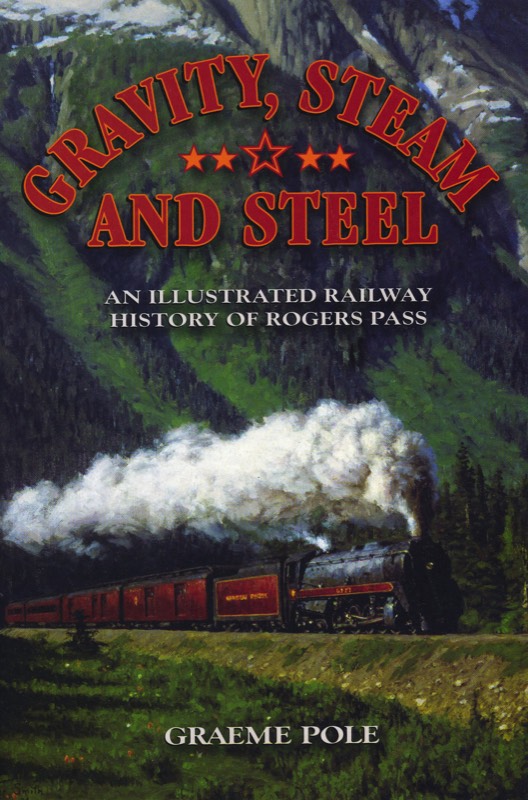
In 1882 the Canadian Pacific Railway committed to building Canada’s first trans-continental railway across unknown ground in the Selkirk Mountains of southern British Columbia. It was a gamble that almost scuttled the project and the promise of a young country. During the next three years, a small army of surveyors, engineers, and labourers cleared the grade and built track across Rogers Pass – the only break in the Selkirk Mountains – a place that defined wilderness. Trestles, tunnels, snowsheds, bridges and miles of looping track – the Canadian Pacific Railway has since employed them all to reduce the dangers and to make railway operations in Rogers Pass reliable. Gravity, Steam, and Steel recounts the triumphs and tragedies of building and operation a railway in a place where twelve metres of snow fall each year, and where trains routinely run on grades that many other railways would consider impossibly steep.
Published 2009 by Fitzhenry and Whiteside, 132 pages, $16.95, ISBN 978-1-897252-468
Received an Honourable Mention Citation in the 2009 BC Historical Federation Writing Awards
Review
Purchase on Amazon
Purchase from Graeme Pole
Purchase from Alpine Book Peddlers
“... a finely illustrated, well-researched perspective into the tragedies and triumphs of locating Canadian Pacific’s rail line through the formidable Selkirk Range of Canada’s Columbia Mountains.”
Bob Kennell, Canadian Pacific Archives








